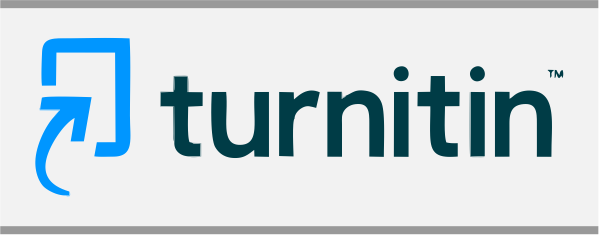EFL Learners’ Interests and Attitudes toward Flipped Classroom Method in Speaking Classes
(1) English Language Education Department, Faculty of Teacher Training and Education, Universitas Iqra Buru, Indonesia
(2) English Literature Study Program, Faculty of Language and Letters, Universitas Negeri Makassar, Indonesia
(3) English Language Education Department, Faculty of Teacher Training and Education, Universitas Muhammadiyah Sorong, Indonesia
(*) Corresponding Author
Abstract
Keywords
Full Text:
PDFReferences
Agrawal, S., & Thakur, R. K. (2014). IMPACT OF ANXIETY AND ATTITUDE ON STUDENTS FOR LEARNING ENGLISH IN INDIA. Agrawal, 1(6). http:
Ahn, M. (2020). An Analysis of Team-Based Learning’s Impact on Interest, Attitude toward English learning, and Self-Directed Learning. The Korean Society of Culture and Convergence, 42(5), 229–254. https://doi.org/10.33645/cnc.2020.05.42.5.229
Alkhoudary, Y. A., & AlKhoudary, J. A. (2019). the Effectiveness of Flipping Classroom Model on Efl Secondary School Speaking Skills. Indonesian EFL Journal, 5(2), 1. https://doi.org/10.25134/ieflj.v5i2.1811
Andujar, A., Salaberri-Ramiro, M. S., & MartÃnez, M. S. C. (2020). Integrating flipped foreign language learning through mobile devices: Technology acceptance and flipped learning experience. Sustainability (Switzerland), 12(3). https://doi.org/10.3390/su12031110
Anwar, C., Islam, U., & Agung, S. (2017). Flipped Classroom in Teaching Vocabulary. August 1945, 109–115. http://eprints.umk.ac.id
Ayçiçek, B., & Yelken, T. Y. (2018). The effect of flipped classroom model on students’ classroom engagement in teaching english. International Journal of Instruction, 11(2), 385–398. https://doi.org/10.12973/iji.2018.11226a
Bergman, J. and Sams, A. (2012). Flip Your Classroom: Reach Every Student in Every Class Every Day. In International Society for Technology in Education. http://search.proquest.com/docview/1613618815?accountid=14777
Ceylaner, S. G., & Karakuş, F. (2018). Effects of the Flipped Classroom Model on Students’ Self-Directed Learning Readiness and Attitudes Towards the English Course. English Language Teaching, 11(9), 129–143. https://doi.org/10.5539/elt.v11n9p129
Dawis, R. V. (2001). Vocational Interests, Values, and Preferences, Psychology of. International Encyclopedia of the Social & Behavioral Sciences, 16299–16302. https://doi.org/10.1016/b0-08-043076-7/01395-4
Eka Malynda, N. (2020). Flipped Classroom in Teaching Speaking. 08 Nomor 0, 38–45.
Ema Prabawanti, F., Supriyadi, S., & Fauzi, A. (2018). Teaching Strategies In EFL Flipped Classroom: A Trend Towards Education 4.0. International Conference on Language, Literature, and Teaching, 47–54. www.ted.com/talks.
Evseeva, A., & Solozhenko, A. (2015). Use of Flipped Classroom Technology in Language Learning. Procedia - Social and Behavioral Sciences, 206(November), 205–209. https://doi.org/10.1016/j.sbspro.2015.10.006
Farrah, M., & Qawasmeh, A. (2018). English Students’ Attitudes Towards Using Flipped Classrooms in Language Learning at Hebron University. Research in English Language Pedagogy RELP, 6(2), 275–294.
Fauzan, A., & Ngabut, M. N. (2018). Journal on English as a Foreign Language EFL students ’ perception on flipped learning in writing class. Journal on English as a Foreign Language, 8(2), 115–129.
Fauzi, A. (2020). The In-Class Flip Model In Teaching Speaking: Improving Elementary Students’ Skill And Learning Process. Indonesian Journal Of Educational Research and Review, 3(2), 64. https://doi.org/10.23887/ijerr.v3i2.26600
Fielden, L. V., Rico, M., & Naranjo, M. J. (2020). Flipped classrooms: Making them work for foreign language students. Diacritica, 34(1), 336–354. https://doi.org/10.21814/diacritica.286
Finch, A. (2012). Attitude Change Through Learning. In Encyclopedia of the Sciences of Learning (pp. 369–371). https://doi.org/10.1007/978-1-4419-1428-6_1631
Gay, L. R., Mills, G. E., & Peter Airasian. (2012). Competencies for Analysis and Applications 10th Edition. In Pearson Education, Inc (Vol. 6, Issue 2). http://library1.nida.ac.th/termpaper6/sd/2554/19755.pdf
Haghighi, H., Jafarigohar, M., Khoshsima, H., & Vahdany, F. (2019). Impact of flipped classroom on EFL learners’ appropriate use of refusal: achievement, participation, perception. Computer Assisted Language Learning, 32(3), 261–293. https://doi.org/10.1080/09588221.2018.1504083
Herlindayana, Sahlan, & Albert. (2017). The Effect Of Flipped Classroom On Students ’ Reading Comprehension. Journal of Language Education and Educational Technology, 2(1), 1–16.
J. Savithri & V. Indira Mudiraj. (2018). ATTITUDE OF SECONDARY SCHOOL STUDENTS TOWARDS LEARNING ENGLISH. IMPACT: International Journal of Research in Humanities, Arts and Literature (IMPACT: IJRHAL), 6(2), 179–184. http://www.impactjournals.us/journals.php?id=11&jtype=2&page=52
Jehma, H. (2016). Flipped learning as a strategy for an effective EFL classroom. Asian EFL Journal Professional Teaching Articles, 90, 54–65.
Köroğlu, Z. Ç., & Çakır, A. (2017). Implementation of Flipped Instruction in Language Classrooms: An Alternative Way to Develop Speaking Skills of Pre-Service English Language Teachers. International Journal of Education and Development Using Information and Communication Technology, 13(2), 42.
Krapp, A. (2002). 18 : An Educational-Psychological Theory of Interest and Its Relation to SDT Interest : A Rediscovered Motivational Concept in. Handbook on Self Determination Research., Csikszentmihalyi 1975, 405–426.
Kurnia, D. M., & Lidyawaty, R. (2018). Strategi Flipped Classroom Untuk Meningkatkan Kemampuan Berbicara Melalui Student’S Minimovie Project. CERMIN: Jurnal Penelitian, 2(2), 99. https://doi.org/10.36841/cermin_unars.v2i2.234
Lestari, I. W. (2021). Flipped classroom in indonesian higher education: A mixed-method study on students’ attitudes and experiences. Studies in English Language and Education, 8(1), 243–257. https://doi.org/10.24815/siele.v8i1.17636
Lily, C. (2019). Metadata of the chapter that will be visualized in SpringerLink. February. https://doi.org/10.1007/978-3-319-41165-1
Lin, C.-J., & Hwang, G.-J. (2018). A Flipped Classroom Approach to Supporting Game-Based Learning Activities for EFL Business Writing Course. 200(Aisteel), 151–155. https://doi.org/10.2991/aisteel-18.2018.31
Linnenbrink-Garcia, L., Durik, A. M., Conley, A. M. M., Barron, K. E., Tauer, J. M., Karabenick, S. A., & Harackiewicz, J. M. (2010). Measuring situational interest in academic domains. Educational and Psychological Measurement, 70(4), 647–671. https://doi.org/10.1177/0013164409355699
Liu, C., Sands-Meyer, S., & Audran, J. (2019). The effectiveness of the student response system (SRS) in English grammar learning in a flipped English as a foreign language (EFL) class. Interactive Learning Environments, 27(8), 1178–1191. https://doi.org/10.1080/10494820.2018.1528283
Lo, C. K., & Hew, K. F. (2017). A critical review of flipped classroom challenges in K-12 education: possible solutions and recommendations for future research. In Research and Practice in Technology Enhanced Learning (Vol. 12, Issue 1). https://doi.org/10.1186/s41039-016-0044-2
Luo, Z., Dang, Y., & Xu, W. (2019). Academic Interest Scale for Adolescents: Development, Validation, and Measurement Invariance With Chinese Students. Frontiers in Psychology, 10(October), 1–14. https://doi.org/10.3389/fpsyg.2019.02301
Marriott Toledo, H. M., & Sà nchez Pèrez, L. M. (2017). Flipping the Classroom: Developing Teaching Skills for Future In-Service English Teachers. INNOVA Research Journal, 2(8), 119–129. https://doi.org/10.33890/innova.v2.n8.2017.345
Melnikova, O., Gilmanova, A., Tyabina, D., & Nikitina, S. (2017). FLIPPED CLASSROOM APPROACH TO TEACHING EFL AT KAZAN FEDERAL UNIVERSITY. INTED2017 Proceedings, 1, 6498–6506. https://doi.org/10.21125/inted.2017.1501
Namaziandost, E., Neisi, L., & Momtaz, S. (2019). The Effectiveness of Flipped Classroom Model on Listening‎ Comprehension Among Iranian Upper-intermediate EFL‎ Learners. Journal of Applied …, 6(4), 129–139. https://www.researchgate.net/profile/Ehsan_Namaziandost/publication/336362143_The_Effectiveness_of_Flipped_Classroom_Model_on_Listening_Comprehension_Among_Iranian_Upper-intermediate_EFL_Learners/links/5d9d4eea92851c2f70f72779/The-Effectiveness-of-Flipped
Nouri, J. (2016). The flipped classroom: for active, effective and increased learning – especially for low achievers. International Journal of Educational Technology in Higher Education, 13(1). https://doi.org/10.1186/s41239-016-0032-z
Oroujlou, N., & Vahedi, M. (2011). Motivation, attitude, and language learning. Procedia - Social and Behavioral Sciences, 29, 994–1000. https://doi.org/10.1016/j.sbspro.2011.11.333
Pu, F. (2017). Review of Research on EFL Flipped Teaching. 142(Icelaic), 308–311. https://doi.org/10.2991/icelaic-17.2017.70
Ralston, C. A., Borgen, F. H., Rottinghaus, P. J., & Donnay, D. A. C. (2004). Specificity in interest measurement: Basic Interest Scales and major field of study. Journal of Vocational Behavior, 65(2), 203–216. https://doi.org/10.1016/S0001-8791(03)00096-4
Ramadhanty, S., & Puspitaloka, N. (2020). EFL Students’ Experiences in a Flipped Reading Comprehension Classroom. Ethical Lingua: Journal of Language Teaching and Literature, 7(2), 381–388. https://doi.org/10.30605/25409190.188
Riza, Z., & Setyarini, S. (2020). EFL Flipped-Classroom: Promoting HOTS in Speaking Skill. 430(Conaplin 2019), 251–255. https://doi.org/10.2991/assehr.k.200406.051
Saada Khadragy. (2016). The Impact of the Flipped Classroom Model of Instruction on the Reading Achievement of Ninth Grade Female Emirati students in the Qurtoba Public School in Dubai . Saada Abdelgawad Mohamed Khadragy Dissertation submitted in partial fulfilment of the requir. September.
Santikarn, B., & Wichadee, S. (2018). Flipping the classroom for English language learners: A study of learning performance and perceptions. International Journal of Emerging Technologies in Learning, 13(9), 123–135. https://doi.org/10.3991/ijet.v13i09.7792
Shanty, H. (2019). Interest in Foreign Language Learning. IDEAS: Journal on English Language Teaching and Learning, Linguistics and Literature, 7(1), 1–12. https://doi.org/10.24256/ideas.v7i1.731
Silvia, P. J. (2001). Interest and Interests: The Psychology of Constructive Capriciousness. Review of General Psychology, 5(3), 270–290. https://doi.org/10.1037/1089-2680.5.3.270
Singay. (2020). Flipped learning in English as a second language classroom: Bhutanese students’ perceptions and attitudes of flipped learning approach in learning grammar. Indonesian Journal of Applied Linguistics, 9(3), 666–674. https://doi.org/10.17509/ijal.v9i3.23217
Singh, C. K. S., Singh, H. S. S. J., Singh, T. S. M., Ja’afar, H., Abdullah, M. S., Mostafa, N. A., & Zamri, M. L. (2018). Flipped Classroom Approach for Improving Speaking Skills of TVET Trainees. International Journal of Applied Linguistics and English Literature, 7(7), 27. https://doi.org/10.7575/aiac.ijalel.v.7n.7p.40
Soliman, N. A. (2016). Teaching English for Academic Purposes via the Flipped Learning Approach. Procedia - Social and Behavioral Sciences, 232(April), 122–129. https://doi.org/10.1016/j.sbspro.2016.10.036
T.T.T., Q., & N.V., L. (2018). Flipped model for improving students’ English speaking performance. Can Tho University Journal of Science, 54(2)(2), 90. https://doi.org/10.22144/ctu.jen.2018.012
Tódor, E.-M., & Dégi, Z. (2017). Language Attitudes, Language Learning Experiences and Individual Strategies What Does School Offer and What Does It Lack? Acta Universitatis Sapientiae, Philologica, 8(2), 123–137. https://doi.org/10.1515/ausp-2016-0022
Turan, Z., & Akdag-Cimen, B. (2020). Flipped classroom in English language teaching: a systematic review. Computer Assisted Language Learning, 33(5–6), 590–606. https://doi.org/10.1080/09588221.2019.1584117
Zainuddin, Z., & Attaran, M. (2016). Malaysian students’ perceptions of flipped classroom: a case study. Innovations in Education and Teaching International, 53(6), 660–670. https://doi.org/10.1080/14703297.2015.1102079
Zarrinabadi, N., & Ebrahimi, A. (2019). Increasing peer collaborative dialogue using a flipped classroom strategy. Innovation in Language Learning and Teaching, 13(3), 267–276. https://doi.org/10.1080/17501229.2018.1455688
Zou, D., & Xie, H. (2019). Flipping an English writing class with technology-enhanced just-in-time teaching and peer instruction. Interactive Learning Environments, 27(8), 1127–1142. https://doi.org/10.1080/10494820.2018.1495654
DOI: 10.24235/eltecho.v8i1.12075
Article Metrics
Abstract view : 70 timesPDF - 10 times
Refbacks
- There are currently no refbacks.
Â
This Journal is indexed by:
Â

This work is licensed under a Creative Commons Attribution 4.0 International License.










